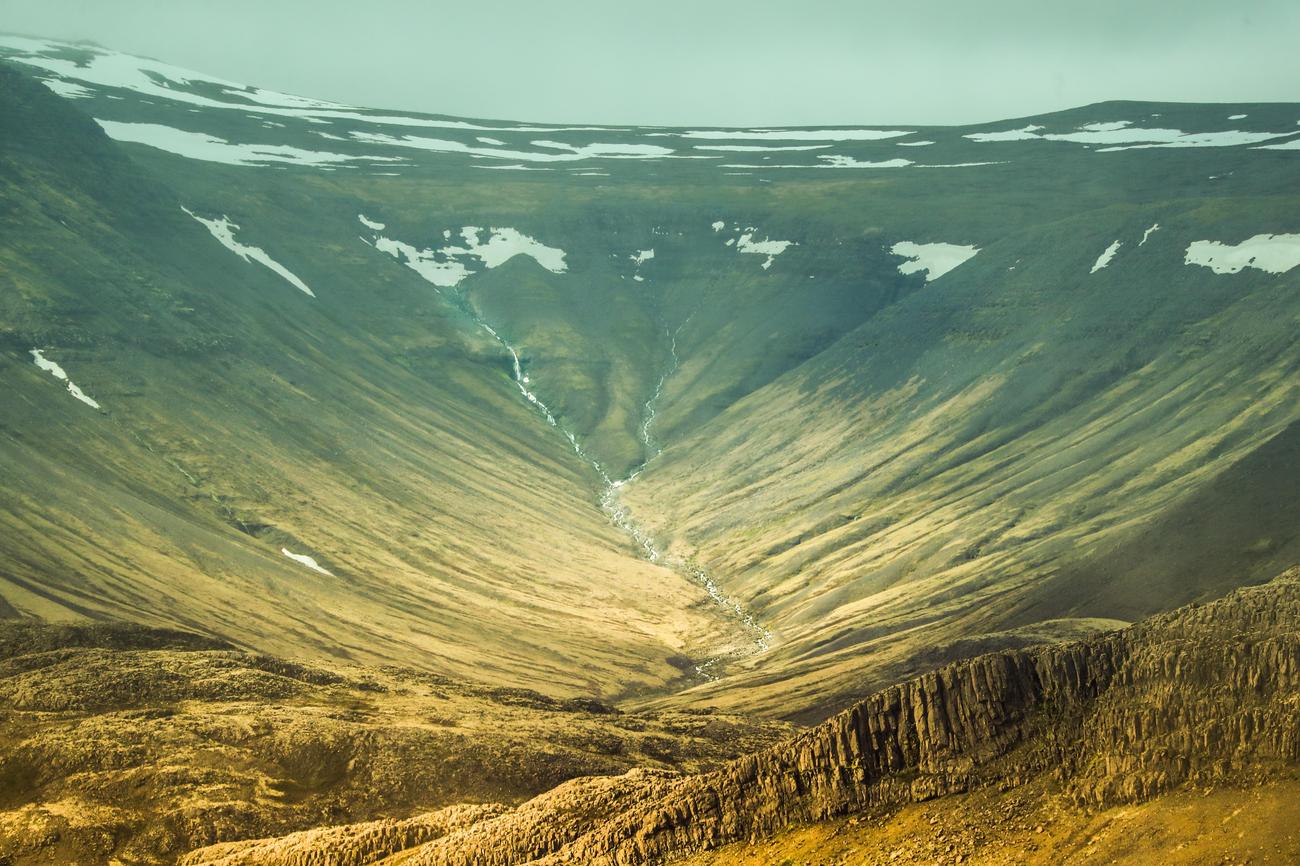Get ready to be amazed by the dazzling fun facts about dry ice! In this article, we will be exploring the unique properties of dry ice and uncovering some fascinating information about this incredible substance. From its use in special effects to its role in food preservation, dry ice has captivated scientists and curious minds alike. So, sit back, relax, and prepare to be dazzled by the incredible world of dry ice.

Fun Facts About Dry Ice
What causes dry ice to be so icy?
Dry ice differs from standard ice cubes. It’s even better (pun intended) than that! Although it appears to be ordinary ice, it is considerably cooler. When heated, regular ice dissolves into liquid water, but dry ice defies this rule. It produces mesmerizing vapor clouds by sublimating directly into carbon dioxide gas as opposed to dissolving. It is comparable to observing sorcery at work!
The Ice “Heavyweight”
Dry ice sinks because it has a greater density than water, which is an additional interesting fact. Imagine a diminutive iceberg settling mesmerizingly into the depths of an aquarium. This is the effect of dry ice in water. However, its weight does not deceive; its capability of sublimation and vapor generation makes it appear to be suspended in thin air.
A molecular dance devoid of dipoles and concerns
A molecular structure that is among the most intriguing characteristics of dry ice. Dry ice, in contrast to its polar counterpart, water, possesses a zero dipole moment and is non-polar. What is the meaning of that? In other words, this indicates that dry ice molecules are neutral regarding which end is more positively or negatively charged. The absence of polarity in dry ice facilitates the manifestation of its advantageous characteristics, such as vapor formation and sublimation.
Delights Frozen and Food Preservation
In addition to captivating us with its extraordinary characteristics, dry ice serves an indispensable function in our daily existence. Dry ice is a superhuman in the realm of food production, preserving the freshness of frozen foods for an extended period of time and the velvety texture of ice cream. It is an exceptional refrigerant due to its exceedingly low temperature, which effectively maintains the chilled state of our preferred delights while inhibiting the proliferation of bothersome bacteria.
Through cylindrical pellets from blocks
There is considerably more dry ice than initially meets the eye. This is not your ordinary ice cube tray circumstance. A variety of dry ice formulations are manufactured, including solid slabs and cylindrical pellets. From ensuring the preservation of perishable products during transport to generating dramatic special effects for the stage, these various shapes serve a vast array of purposes.
The Sensation of Sublimation
In contrast to ordinary ice, which condenses into a liqhasdry ice adopts an alternative method of egress. Rather than undergoing dissolving, the substance undergoes sublimation. Precisely what is sublimation? In other words, it is the process by which a solid changes directly into a gas without first becoming a liquid. It is akin to a spectacular disappearance, which only leaves indelible imprints of wonder and astonishment.
Posipross andconsativdryoicery Ice
Similar to any substance or chemical, dry ice has both advantages and disadvantages. Let’s evaluate them for a moment:
Pros:
Dry ice is an exceptional refrigerant that maintains extremely low temperatures. It is ideal for transporting perishable goods in order to preserve them. Due to the mesmerizing vapor effects produced by sublimation, it is an indispensable component in special effects.
Cons:
Its extreme cold temperature may result in frostbite or skin injury if not handled appropriately. Furthermore, because it undergoes sublimation, it is imperative to store it in areas with adequate ventilation to facilitate air circulation. Dry ice can cause severe internal injuries and should never be ingested.
Entertaining Facts Table
In order to further explore the interesting information regarding dry ice, we shall consult this convenient table:
| Fun Fact | Description |
|---|---|
| Sublimation | Dry ice goes from solid to gas without melting into a liquid, resulting in those mesmerizing vapor clouds. |
| Sink or Swim | Dry ice is more dense than water, so it sinks when added to a liquid. |
| Non-Polar Magic | Dry ice molecules have zero dipole moments, unleashing all its fascinating properties. |
| Chilling Superhero | Dry ice is an essential refrigerant, keeping our food frosty fresh and preventing bacterial growth. |
| Shape Shifters | Dry ice can be found in solid blocks or cylindrical pellets, each serving different purposes. |
Now that you’ve explored these dazzling fun facts about dry ice, you can amaze your friends with your newfound knowledge. From its captivating sublimation to its unique properties in food preservation, dry ice continues to bewilder and delight us. So next time you encounter this extraordinary substance, remember to appreciate its coolness—both literally and figuratively!
In the enchanting world of dry ice, there are many intriguing wonders to behold. Have you ever wondered what makes dry ice so unique? Well, look no further! Click here to uncover the secrets behind this mesmerizing substance.
Now, let’s dive into another fascinating question: how long does dry ice last? Brace yourself for mind-boggling answers that will leave you in awe. Discover the astonishing truth by clicking here.
But wait, there’s more! Did you know that dry ice can create captivating bubbles? Prepare to be amazed as you explore astonishing bubbles made from dry ice. Click here to uncover the magical world of dry ice bubbles.
Now, let’s explore the chilling effect of dry ice on human touch. Curiosity piqued? Click here to unravel the mysteries behind this bone-chilling phenomenon.
Ever wondered how dry ice got its name? Prepare to be dazzled by the fascinating origins of this icy marvel. Click here to embark on a journey through history.
Hold on to your seats, because we have a burning question for you. Can you drink dry ice when it melts? Curiosity tingling? Click here to find out the answer to this puzzling conundrum.
Now, let’s delve into an intriguing topic: why is dry ice illegal? Prepare to be captivated by the unexpected laws surrounding this chilly substance. Click here to uncover the hidden secrets.
Have you ever wondered who was the brilliant mind behind the creation of dry ice? Prepare to be amazed as you discover the trailblazer who invented this extraordinary substance. Click here to be enlightened.
Finally, let’s indulge in some fancy language. Discover an elegant term for dry ice that will impress your friends and leave them in awe. Click here to uncover the fancy name that will elevate your knowledge.
As you explore these enthralling aspects of dry ice, let your curiosity guide you. Each click will lead you to a wealth of knowledge and a deeper appreciation for the wonders of this extraordinary substance. Happy exploring!
How To Make Dry Ice
The peculiar properties of dry ice, an intriguing substance, have piqued the interest of both scientists and enthusiasts. This segment will examine the intriguing process of preparing dry ice at home through the use of a few straightforward steps and a CO2 fire extinguisher. However, prior to delving into the specifics, allow me to provide a concise overview of dry ice and its extraordinary properties.
Dry ice is composed of solid carbon dioxide and derives its name from the fact that, unlike regular ice, it does not dissolve into a liquid. In contrast, it undergoes a direct transition from a solid state to a gaseous one via sublimation. This phenomenon gives rise to the eerie vapor frequently observed in films, haunted houses, and theatrical productions.
It is worth noting that the initial observation of dry ice occurred in 1835. Adrien-Jean-Pierre Thilorier, a French inventor, was fortuitously the one who discovered this enigmatic substance. Thomas B. Slate did not submit an application for a United States patent on a method to produce solid Armedxide until 1924. With this historical fact in hand, we shall proceed to the fascinating procedure of dry ice production.
DIY Dry Ice: Straightforward Procedures
A pillowcase and a CO2 fire extinguisher are vital components for dry ice production at home. Before proceeding, ensure that adequate ventilation is in place, as carbon dioxide gas can be hazardous in confined spaces. Implement requisite safety measuresgloves, as donning gloves, to safeguard the epidermis against frostbite.
- Commence by discharging the CO2 fire extinguisher’s pressure. To accomplish this, locate and cautiously open the pressure-release valve, which is typically located near the handle. For the sake of safety, ensure that the gas is directed away from yourself and others.
- After the fire extinguisher has been lowered to its side, direct its beam towards the aperture of the pillowcase. Open the valve gradually and consistently to permit carbon dioxide gas to enter the pillowcase.
- As the carbon dioxide gas continues to solidify into dry ice and the temperature of the pillowcase continues to decline, observe in awe. The mesmerizing transformation occurs as a result of the gas’s rapid expansion leading to an extremely low temperature.
- Following a brief interval of time, proceed to deactivate the fire extinguisher by closing its valve and cautiously extracting the pillowcase. It is critical to hands,ise caution when approaching the dry ice with unprotected hands, as doing so may result in frostbite. Employ tongs or gloves when manipulating the dried ice.
Finally, we have ouit—yourn dry ice made from scratch. Dry ice provides an inexhaustible scope for imaginative endeavors, including the construction of crystal balls and fog devices for parties.
“By following these simple steps, you can witness the magical transformation of carbon dioxide gas into solid dry ice right in the comfort of your own home.”
Dry ice serves as more than just a source of enterthasnt; it also has practical applications. It is frequently utilized in the culinary industry, specifically in the freezing and preparation of ice cream. The dry ice sublimates and releases carbon dioxide gas during addition to these processes; this gas aides in the formation of a creamy consistency and inhibits the growth of harmful bacteria.
In addition to its culinary applications, dry ice functions as a multipurpose refrigerant. Its exceptionally low temperature of -78.5 degrees Celsius (-109.3 degrees Fahrenheit) renders it optimal for the preservation of perishable goods, including biological samples, transplantable organs, and medication.
“From preserving our favorite frozen treats to safeguarding valuable medical supplies, dry ice has proven to be an invaluable tool in maintaining the freshness and integrity of various products.”
Notwithstanding this, handling dry ice requires extreme prudence. Prolonged skin exposure to the exceedingly low temperature can result in frostbite and subsequent skin damage. To prevent any adverse effects, itice, imperative to consistently handle dry ice while wearing mittens and maintaining adequate ventilation.
“It is crucial to maintain safety as the foremost concern when engaging with dry ice.” It should be handled with caution, safeguarded by protective equipment, and adequate ventilation should be maintained throughout its utilization.
In summary, the process of producing dry ice in one’s own residence serves as both a stimulating endeavor and a chance to investigate the distinctive characteristics of this enthralling material. Dry ice continues to astomeltingmotivate with its capacity to transition from a solid to a gaseous state without dissolving, as well as its applications in food preservation and special effects. Therefore, venture beyond your scientific inclinations and immerse yourself in the captivating realm of dry ice.
“With just a few simple supplies and precautions, you can embark on a magical journey of creating your very own dry ice and uncovering the wonders it holds.”
Consequences of Dry Ice
Dry ice, that enigmatic substance that appears to operate by enchantment, possesses remarkable properties that render it genuinely exceptional. Dry ice’s effects, which include the preservation of food and organs and the production of mesmerizing fog, are simply intriguing. This segment will delve into the remarkable realm of dry ice and reveal its mesmerizing consequences.
The Formation of Fog: Air and Water Transformation
The formation of vapor is one of the most captivating phenomena that emerges when one considers dry ice. However, have you ever pondered the process by which it transpires?
Dry ice sublimates, which signifies a direct transition from a solid to a gaseous state. An imperceptible mist or fog-like condensation of carbon dioxide gas is produced by this process. The phenomenon in question can be attributed to the density of dry ice. Dry ice, which is more dense than water, descends in both air and water, producing an unsettling fog-like effect. It is a veritable spectacle to behold, particularly when manifested in eerie Halloween decorations or theatrical presentations.
The fog produced by the sublimation of dry ice elevates commonplace air and water to a mesmerizing appearance.
Power to Chill: An Icy Refrigerant
Due to its exceptional refrigeration capability, dry ice is a highly suitable refrigerant for a wide range of applications. By virtue of its exceedingly low temperature of -78.5 degrees Celsius (-109.3 degrees Fahrenheit), it obviates the necessity for conventional refrigeration units and ice to maintain frozen items.
Dry ice has evolved into an essential instrument in the fields of medicine and food production, both for transporting perishable products and preserving delicate organs prior to transplantation. By sustaining a consistently low temperature, it effectively inhibits the development of bacteria and prolongs the viability of perishable goods.
Dry ice is a valuable instrument for the preservation of food and medical supplies due to its frigidity, which guarantees their freshness and extends their storage life.
Extraordinary Results: Unleash Brilliant Ingenuity
Dry ice is renowned not only for its practical uses but also for its capacity to produce awe-inspiring visual effects. A variety of theatrical and cinematic illusions are possible due to the peculiar properties of dry ice, which can transform boiling cauldrons into eerie cemeteries.
The ethereal vapor generated by the sublimation of dry ice can lend an enchanting ambiance to wedding photoshoots, stage productions, and concerts. Its ethereal quality captivates audiences and leaves a lasting impression by establishing an ambiance of intrigue and anticipation.
The capacity of dry ice to generate enthralling vapor imbues visual presentations and performances with an air of mystique, captivating and enchanting spectators.
Frostbite Precautions: Exercise Caution
Despite the extraordinary effects that dry ice can produce, it must be handled with extreme prudence. Direct exposure to its extremely low temperature may result in frostbite and damage to the epidermis. When handling dry ice, always use gloves or tongs to ensure safety, and avoid protracted exposure to bare skin.
Additionally, adequate ventilation is vital when utilizing dry ice. Due to the process of sublimation into carbon dioxide gas, it is critical to maintain sufficient ventilation in enclosed areas to prevent gas accumulation. This will aid in maintaining your own and others’ safety.
For a safe experience when working with dry ice, observe the necessary precautions to prevent frostbite and ensure adequate ventilation.
ArgumentsconsFavodryficey Ice
Similar to any other substance, dry ice possesses both benefits and drawbacks. Together, we can obtain a comprehensive picture of this extraordinary material by examining its pros and cons.
Pros:
Dry ice serves as a refrigerant, effectively maintaining the temperature of objects without causing the disruption caused by ice dissolving. It maintains perishable foods and vital medical supplies in pristine condition. Its mesmerizing atmosphere imparts an enchanted quality to events and performances.
Cons:
– Frostbite and skin injury can result from direct contact with bare skin. – Adequate ventilation is required to prevent carbon dioxide gas accumulation.
Despite the remarkable preservation and cooling effects that dry ice can produce, extreme caution must be exercised to avoid any potential dangers.
To conclude, dry ice produces an unquestionably dazzling effect. Dry ice consistently astonishespowerits capacity to generate enthralling visual effects, produce fog, and exert its chilly influence. However, caution must be exercised when handling it and safety precautions must be observed. Dry ice remains an unparalleled substance due to its distinctive characteristics and extensive array of uses, which consistently astonish and motivate.
| Effect | Description |
|---|---|
| Fog Formation | Dry ice sublimates to form dense fog when in contact with air or water, creating a mystical and captivating atmosphere. |
| Chilling Power | Its extremely low temperature makes dry ice an excellent refrigerant, preserving food and medical supplies with ease. |
| Spectacular Effects | Dry ice’s billowing fog adds a touch of enchantment to performances and events, creating a visually stunning experience. |
| Safety Precautions | Proper handling techniques, like wearing gloves and ensuring ventilation, are crucial to avoid frostbite and other potential risks. |
| Pros and Cons | Dry ice offers advantages such as refrigeration and cool effects, but also presents risks like frostbite and the need for proper ventilation. |

FAQ
When did dry ice first come into existence?
Adrien-Jean-Pierre Thilorier, a French inventor, first observed dry ice in 1835.
Who was the inventor of a method for producing solid carbon dioxide?
In 1924, Thomas B. Slate submitted an application for a United States patent on a process for producing solid carbon dioxide.
Why does desiccated ice typically appear white?
A: The hue of dry ice is typically white due to the freezing of water vapor into frost on its surface.
What is dried ice’s specific gravity?
As dry ice has a greater density than water, it descends.
What are some frequent applications of dried ice?
Dry ice is utilized for carbonating beverages, preserving food and organs, and eliminating insects, among other things.
















